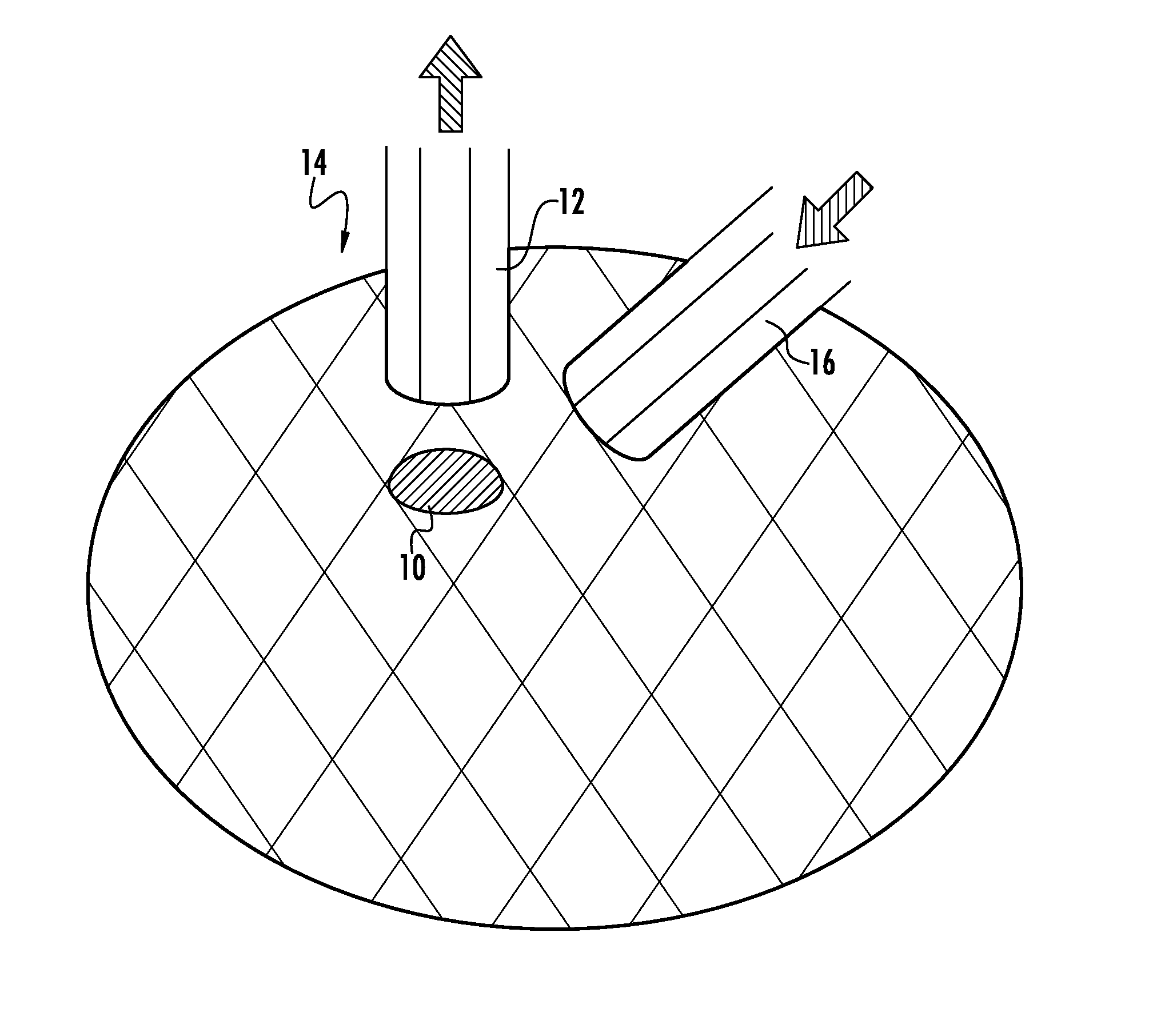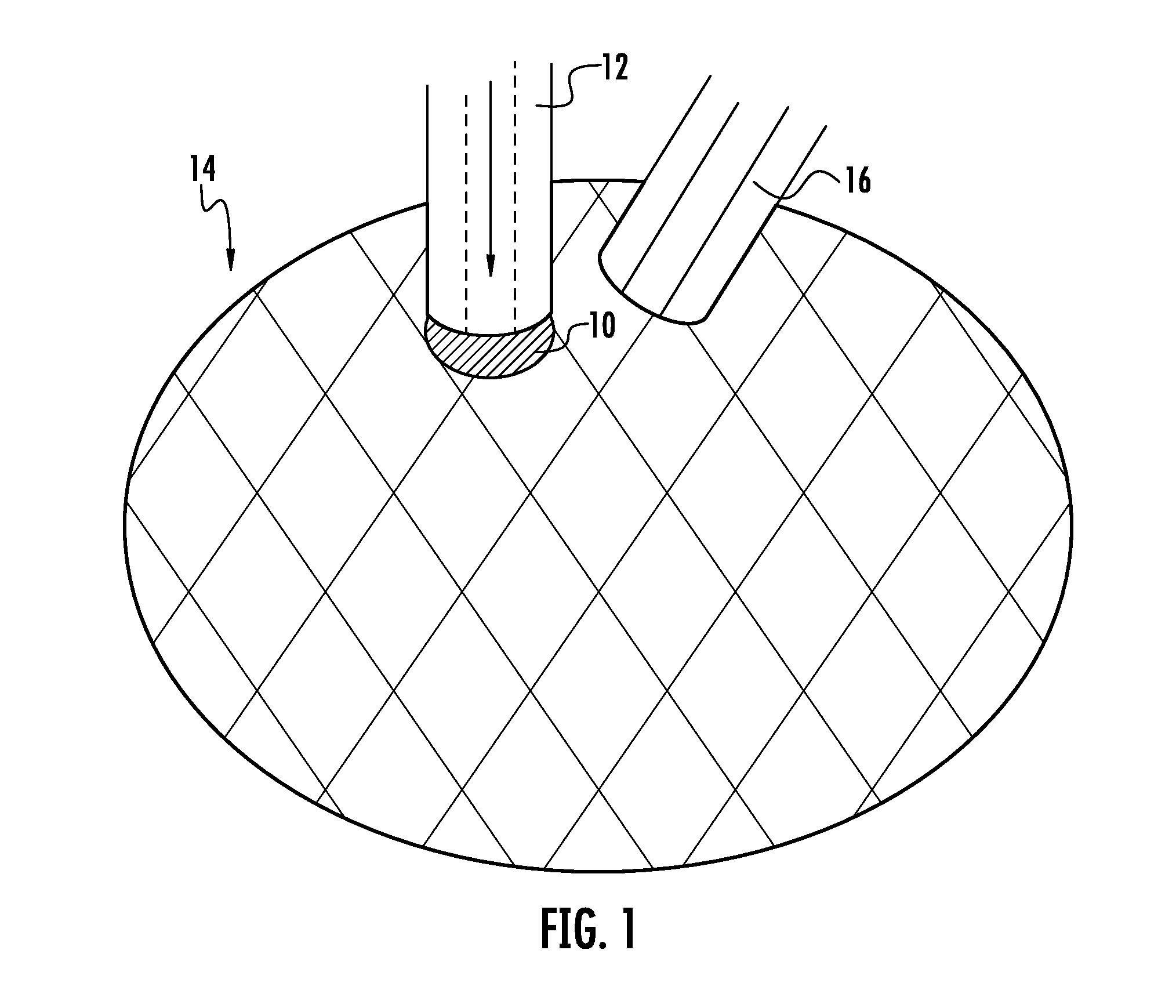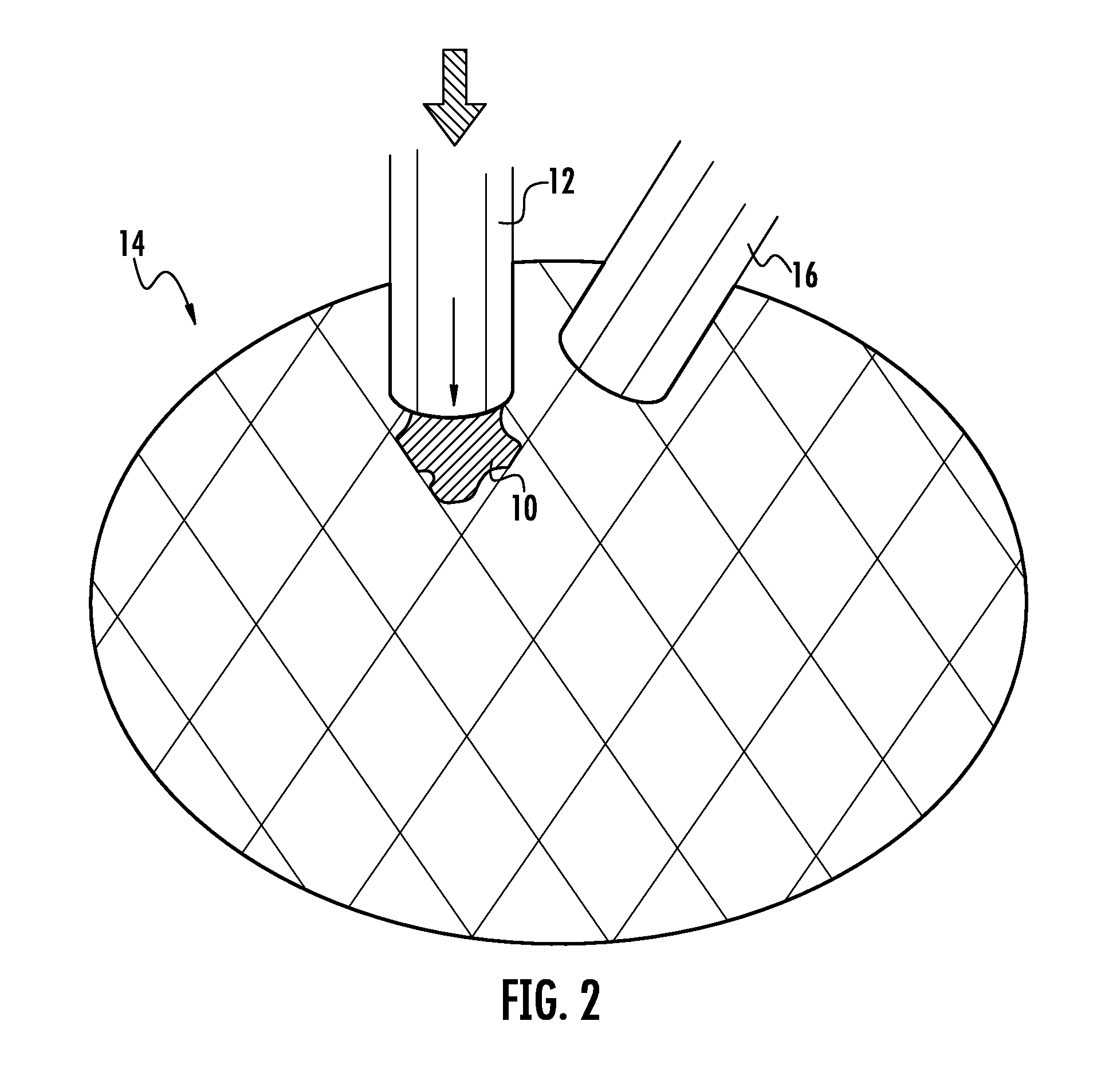Method and system for automating sample preparation for microfluidic cryo tem
a cryo-tem and microfluidic technology, applied in the field of methods and systems of preparing specimens, can solve the problems of limiting the ability to examine certain specimens, limiting the formation of certain natural structures over time, and a large amount of droplets, so as to facilitate the direct visualization of aggregates, reduce the excess volume, and reduce the effect of shear ra
- Summary
- Abstract
- Description
- Claims
- Application Information
AI Technical Summary
Benefits of technology
Problems solved by technology
Method used
Image
Examples
Embodiment Construction
[0021]Now referring to the drawings, the present invention can be seen to provide a method and system of preparing transmission electron microscopy (TEM) samples for examination by depositing extremely small samples onto a grid without need for a blotting step. As best shown at FIG. 1, the present invention generally provides a method and system for the formation of a sample liquid droplet 10 at the end of a capillary 12, wherein a portion of the liquid 10 is transferred to the TEM sample grid 14 by direct contact of the droplet 10 therewith. The excess volume in the liquid droplet is then retracted by an adjacent capillary 16. The flow rate of injection / retraction and the growth of the drop on the capillary tip are initially evaluated to tune the starting time of the retraction capillary motion. After a predetermined time interval, the retraction capillary is moved toward the drop of the sample to remove the excess volume. As compared to a conventional machine, where the blotting p...
PUM
 Login to View More
Login to View More Abstract
Description
Claims
Application Information
 Login to View More
Login to View More - R&D
- Intellectual Property
- Life Sciences
- Materials
- Tech Scout
- Unparalleled Data Quality
- Higher Quality Content
- 60% Fewer Hallucinations
Browse by: Latest US Patents, China's latest patents, Technical Efficacy Thesaurus, Application Domain, Technology Topic, Popular Technical Reports.
© 2025 PatSnap. All rights reserved.Legal|Privacy policy|Modern Slavery Act Transparency Statement|Sitemap|About US| Contact US: help@patsnap.com



